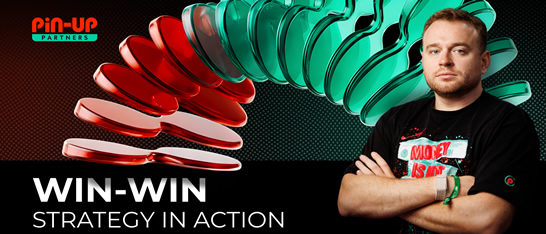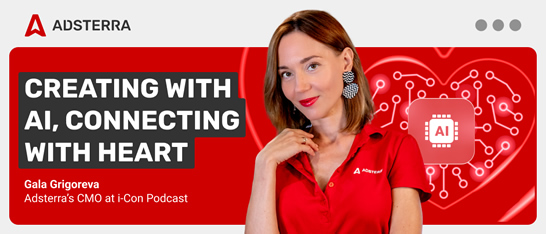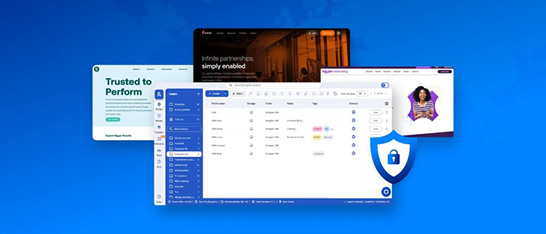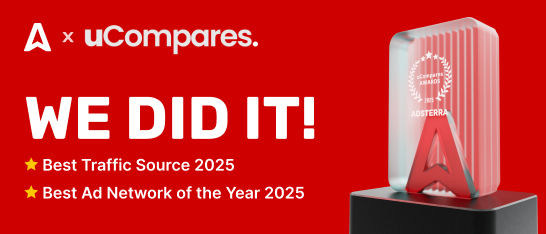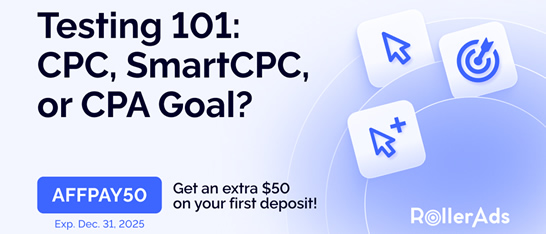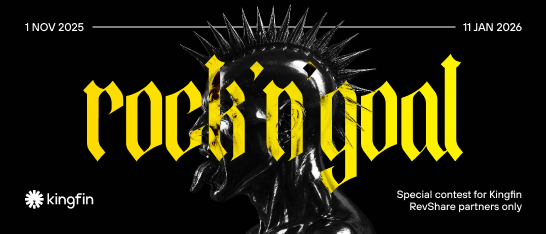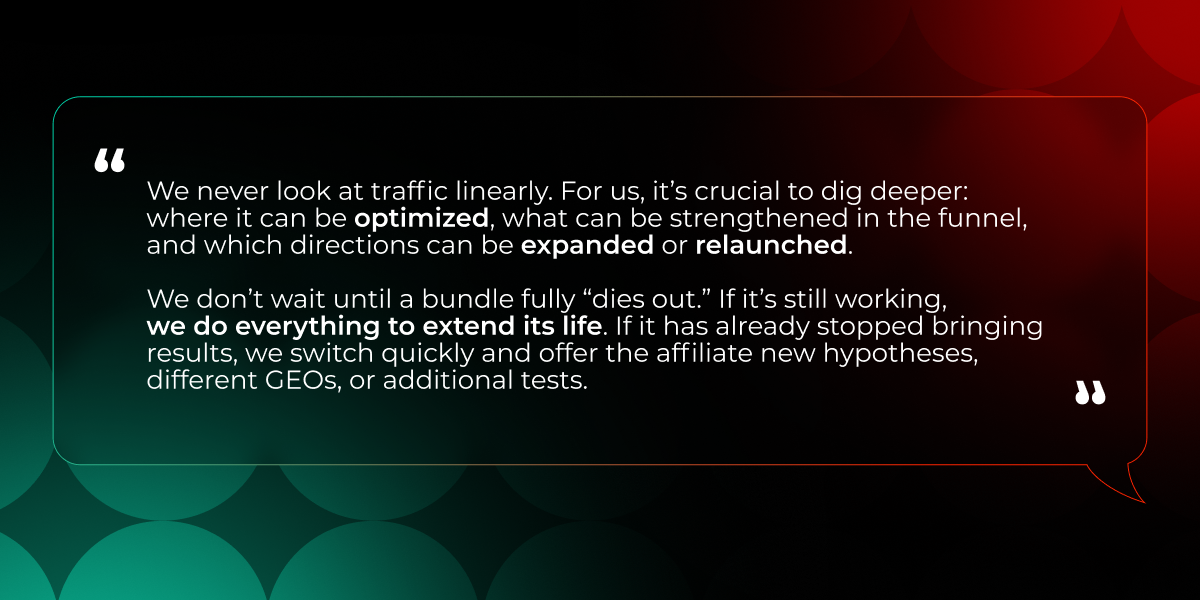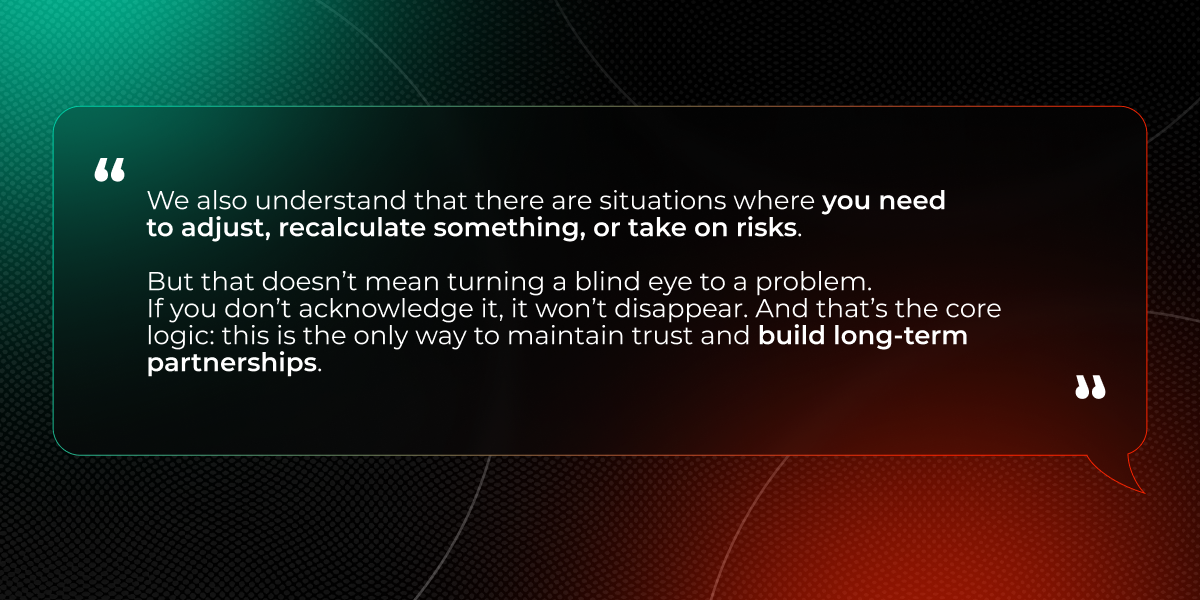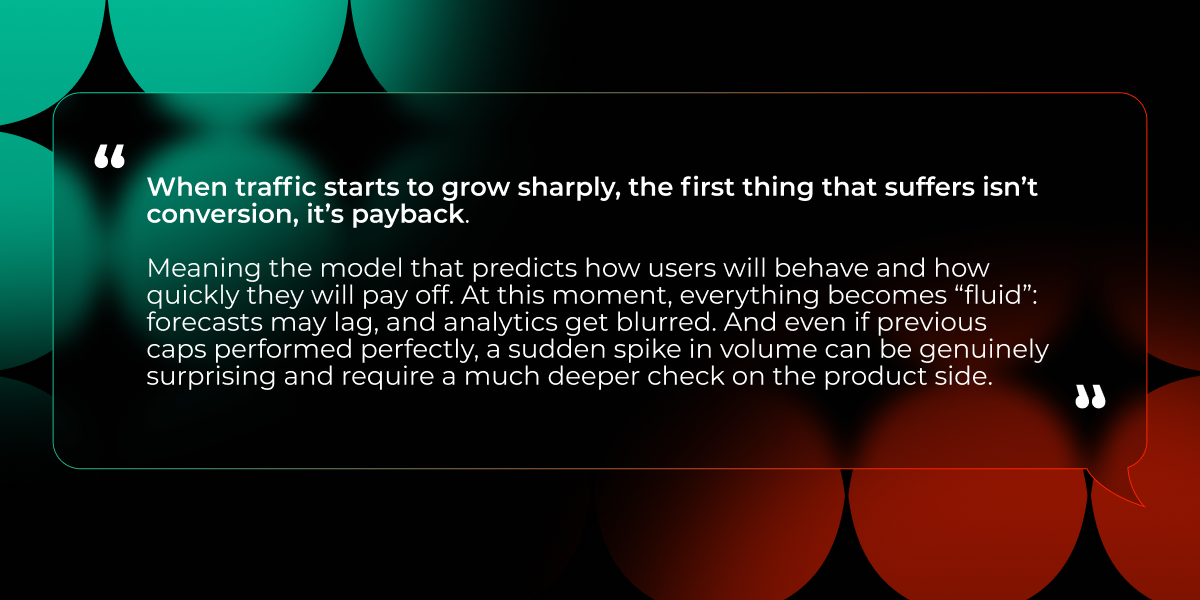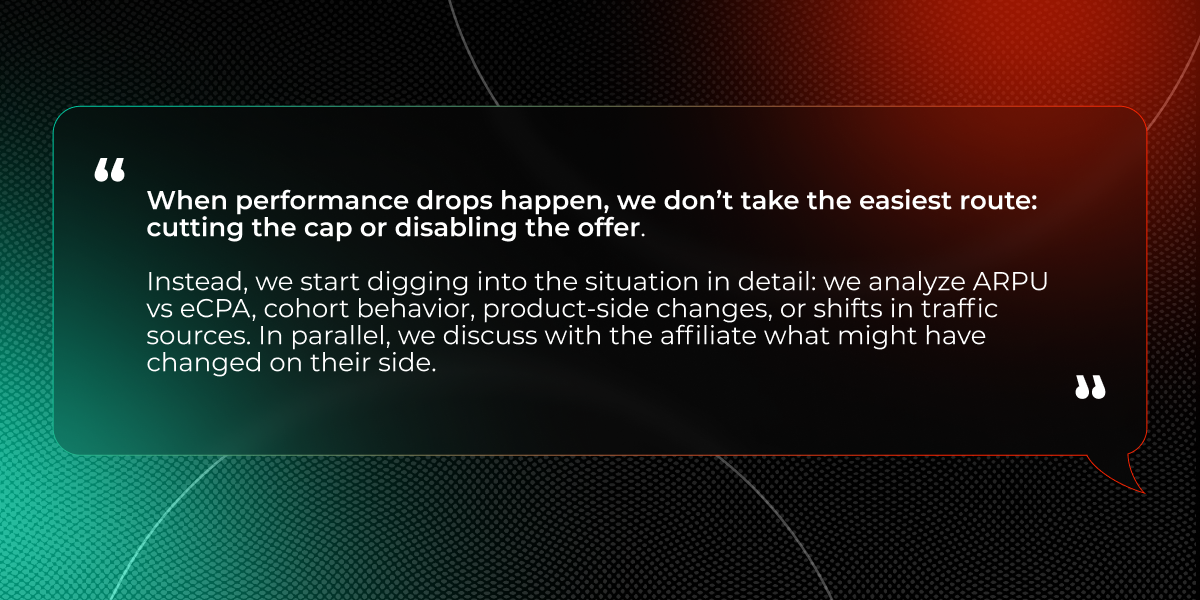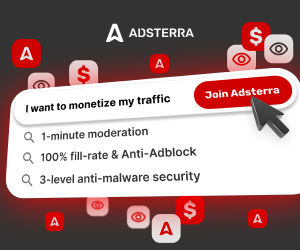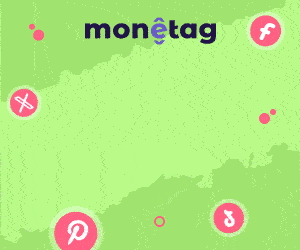
How to survive in an affiliate marketing landscape where competition grows every single day? In a new interview Oleksandr Hloza, Team Lead Affiliate at PIN-UP Partners, talks about the market’s biggest challenges, the issues affiliates are facing, and how the team helps partners not only stay profitable but also scale.
Let’s start with the big picture. Today, many affiliates say the market is becoming more complicated: competition is rising, and finding a working approach is getting harder. As a direct advertiser and affiliate program, do you feel this shift yourselves? What are the biggest challenges affiliates face right now?
Like everyone else on the market, we see changes happening on the affiliates' side. The simplest example: if there’s a wave of account bans in the traffic sources, or Google makes adjustments on its side, it instantly affects several directions at once: whether it’s ASO, SEO, or networks generating traffic through those channels. All of this impacts both volume and traffic quality.
Of course, a lot depends on the specific traffic source an affiliate works with. But overall, the situation comes down to one key metric: the cost of launch and its payback, meaning the ROI at which the affiliate’s unit economics hold together. This applies to paid traffic from major sources, where work often turns into a “battle” with the system (directly affecting launch costs), as well as to partners’ own traffic-generation projects.
Competition in affiliate marketing is brutal right now. What would you say are the biggest challenges from your side, and how do they influence your work with affiliates?
Competition is happening not only among affiliates, but also among those who want to buy traffic. For us, the main challenge, and at the same time our key mission, is to ensure affiliates have the highest possible percentage of successful launches and to build a system that minimizes losses across the entire path of the traffic flow.
Working with partners, we offer a wide range of opportunities: from the classic CPA model to compensated tests, as well as support with creatives and other tools — all of that has already become a basic standard.
But we also understand that our role goes beyond operating strictly within our own business model. We aim to integrate processes deeper for all sides: not only collaborating at the level of traffic buying, but working with the product itself, refining it according to the specifics of each source and each partner’s bundle. That’s where we see a true growth point and real mutual reinforcement.
When funnels of bundles start “die,” it hits affiliates hard. What do you do to support partners in those moments?
We track key metrics and volumes daily. Our goal isn’t just to observe but to react in time to retain and grow traffic. If we spot a traffic drop, we’re the first to reach out to the affiliate: what happened, how can we help, what steps can we take together?
If conversion drops on our side, we involve the product team and look for a solution. If the problem affects the affiliate’s economics and the traffic is valuable for us, we’re ready to meet them halfway: discuss conditions, find compromises, and help keep their campaigns profitable.
We never look at traffic linearly. For us, it’s crucial to dig deeper: where it can be optimized, what can be strengthened in the funnel, and which directions can be expanded or relaunched. We don’t wait until a bundle fully “dies out.” If it’s still working, we do everything to extend its life. If it has already stopped bringing results, we switch quickly and offer the affiliate new hypotheses, different GEOs, or additional tests.
Because in this market, the winner isn’t the one who simply reacts; it’s the one who acts proactively.
You’re one of the few affiliate programs that openly acknowledge “certain challenges” when working with traffic. That kind of honesty is rare. Can you share what these challenges are and why you believe it’s important to discuss them openly with partners?
Everyone in this market understands perfectly well what they have to deal with: affiliates, product teams, and affiliate programs alike. So denying the obvious means not respecting your partner.
The challenges vary. Sometimes there are local nuances, like what’s happening now in India. In other countries, issues stem from payment systems or from the approaches affiliates and product teams use. All of this directly affects the funnel and ROI for everyone involved in the chain. And first of all, for the affiliate who’s generating the traffic. As a direct advertiser, we’re always interested in high-quality, stable volumes. As Tony Robbins would say, “Buy traffic that pays off, and don’t buy the traffic that doesn’t.” :))
We also understand that there are situations where you need to adjust, recalculate something, or take on risks.
But that doesn’t mean turning a blind eye to a problem. If you don’t acknowledge it, it won’t disappear. And that’s the core logic: this is the only way to maintain trust and build long-term partnerships.
Working with large-scale traffic volumes
Let’s move to the main topic: working with high traffic volumes. Everyone wants to get there, but not everyone understands what stands behind it. When an affiliate starts driving really big numbers, what’s the first thing that begins to “break”? Which metrics tend to drop most often?
When traffic starts to grow sharply, the first thing that suffers isn’t conversion; it’s payback. Meaning the model that predicts how users will behave and how quickly they will pay off. At this moment, everything becomes “fluid”: forecasts may lag, and analytics get blurred. And even if previous caps performed perfectly, a sudden spike in volume can be genuinely surprising and require a much deeper check on the product side.
A bit later, both Click2Reg and Reg2Dep may also drop. That’s a classic scaling effect, and one we’ve already learned to work with. But the truly painful part is the fluctuating payback forecast: it directly affects budgeting decisions and the entire user-retention strategy.
The key metrics for any affiliate are Click2Reg and Reg2Dep. Have you had experience improving these metrics, and by how much? What made it possible? Was it work with creatives, product-side optimization, or something else?
Yes, we’ve had such cases. For example, in one GEO, we managed to raise Reg2Dep from about 10% to 15%. It wasn’t “magic”. It was the result of systematic work from both sides.
On our side, we improved the product: simplified the registration flow and added more conversion-friendly payment options. On the webmaster’s side, there was work on creatives and funnel optimization. As a result, we achieved a synergistic effect: each individual step would have brought only a small uplift, but together they significantly improved the metrics.
For us, this is a clear indicator that success in affiliate marketing is built on partnership, when the product and the webmaster move in the same direction.
How do you distinguish a normal metrics drop caused by a sharp traffic increase from a real problem that requires immediate intervention? Do you have internal “red flags” or threshold values?
The first drop by itself isn’t always a problem. The key is to understand whether it’s a temporary fluctuation or the beginning of a systemic issue. We rely on a set of indicators:
ARPU falls more than 30% below eCPA
Reg2Dep drops below the average for this GEO and source
The share of one-time depositors increases
RD/FD ratio declines on day 1 and day 7
A sharp and abnormal shift in the forecast (up or down)
But the point is not just noticing the “flag.” What matters is digging into the root cause: why exactly it happened and what steps we can take. That’s the only way to distinguish a temporary fluctuation from a real issue that requires immediate action.
Win-win strategy in action
The case is great, but let’s talk about a systematic approach. Let’s imagine one of your affiliates stops getting payback on their traffic. What’s your standard action plan? What interesting solutions do you use?
We have a clear algorithm. First, we check the key indicators:
ARPU vs eCPA — how much it dropped and in which segments;
cohort behavior — whether there’s a failure at a specific stage;
product side — whether anything changed on our end (bonuses, flow, payment methods, etc.).
In parallel, we discuss with the affiliate what may have changed on his side.
Then we gather all the information into one pool and look for solutions across different directions, from product optimization to adjusting user communication. Sometimes it gets very granular: for example, how many calls or SMS attempts are needed to bring a player back.
What’s important is that we never rush in with “stop everything!” Our goal is to understand the cause and find improvement points, and not to shut things down at the first sign of a drop.
Many affiliates fear that if quality drops, their cap will be cut or the offer will be disabled. How do you work with this fear? How do you convince partners you’re on their side and invested in their earnings?
For us, it’s crucial to show that we truly are on the same side and that we share the same goal: keeping the ROI positive and scaling the affiliate’s revenue.
When performance drops happen, we don’t take the easiest route: cutting the cap or disabling the offer.
Instead, we start digging into the situation in detail: we analyze ARPU vs eCPA, cohort behavior, product-side changes, or shifts in traffic sources. In parallel, we discuss with the affiliate what might have changed on their side.
Based on this data, we look for solutions: we optimize the funnel, involve the product team, test other GEOs, or approaches. If the traffic is valuable, we’re ready to meet the affiliate halfway: discuss conditions, try compensation tests, or offer new hypotheses.
We don’t view traffic linearly, and we don’t act reactively. Our philosophy is to work proactively: to preserve and strengthen a bundle for as long as possible and only switch when necessary. This approach is what helps build trust and long-term relationships with affiliates.
How do you find the balance between a high eCPM for the affiliate and a strong LTV for your product?
It all comes down to analytics. We look at the entire business model: from tests and retention indicators to cohort behavior and what the product can do with those cohorts further down the line. Only this way can you build a real balance between high eCPM for the affiliate and long-term player value for the product.
Plans, Features & the Future
What is the development and product team working on right now? What new features or optimizations can affiliates expect soon to make scaling large volumes easier and more profitable?
In the near future, our focus is on expanding our own API. This will allow teams and projects generating traffic through their own solutions to integrate with analytics more easily and quickly, collect data, and work with link generation, ultimately enabling smoother processes for various traffic-generating projects.
We’re also developing tools for automating traffic optimization: improved cohort reports, flexible tracking settings, and more convenient payment-handling flows. All of this is built to help affiliates scale more easily and increase profitability. In addition, we’re integrating an acquired service that will combine a full set of features for working with mobile traffic.
And the final question. Previously, PIN-UP Partners was part of the PIN-UP Global holding, but after the transformation, you became part of the RedCore business group. How is the affiliate program structured now within the new framework, and what has changed for the team and partners?
RedCore brought together strong brands from different niches under one structure, and now each company focuses on its own expertise, while staying connected with the rest. PIN-UP Partners remains an affiliate program with a focus on affiliate marketing, but now we have more opportunities: faster hypothesis testing, deeper analytics, and knowledge-sharing across the entire group.
Simply put, we’ve become part of a large group of companies where every team helps another move faster.
